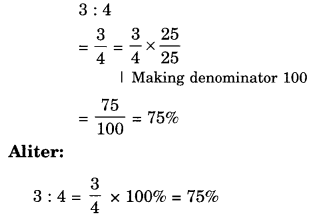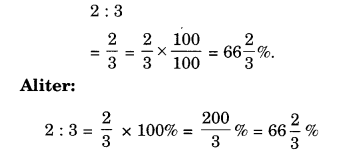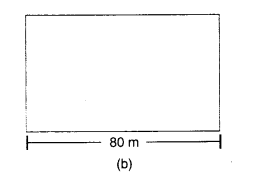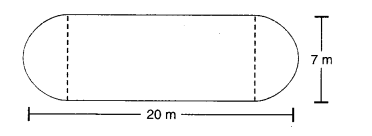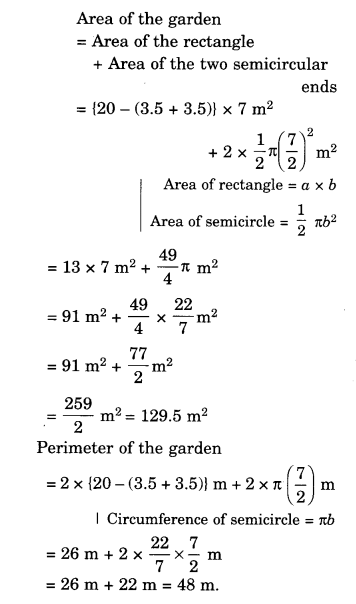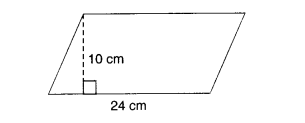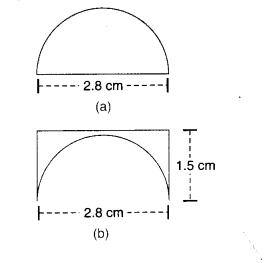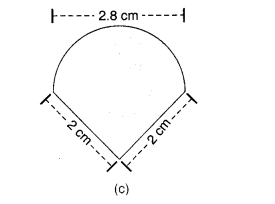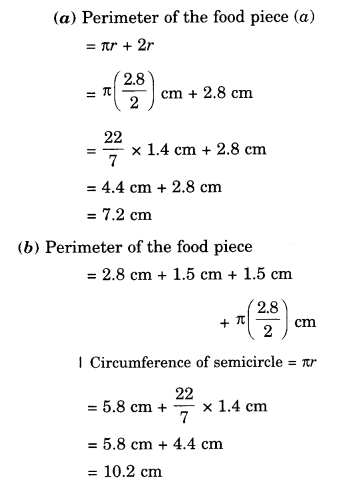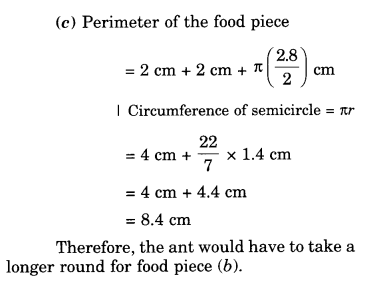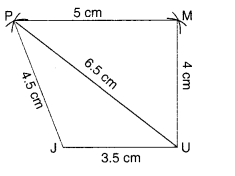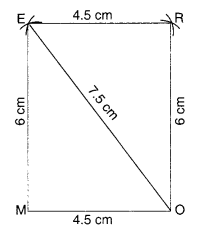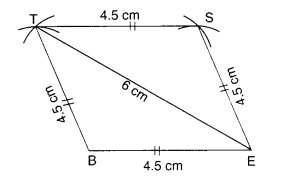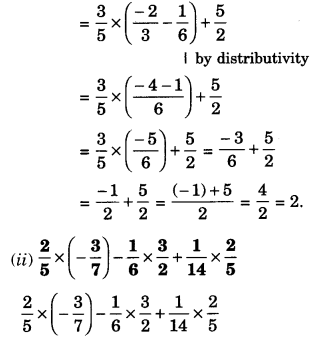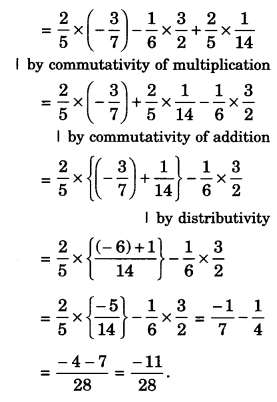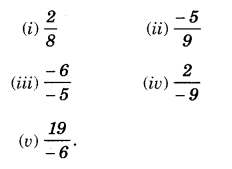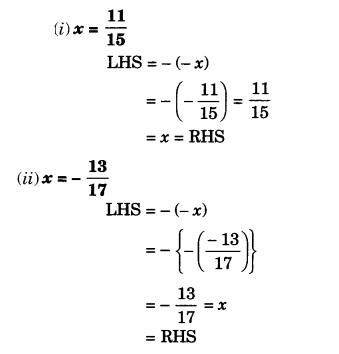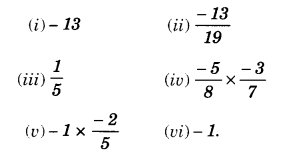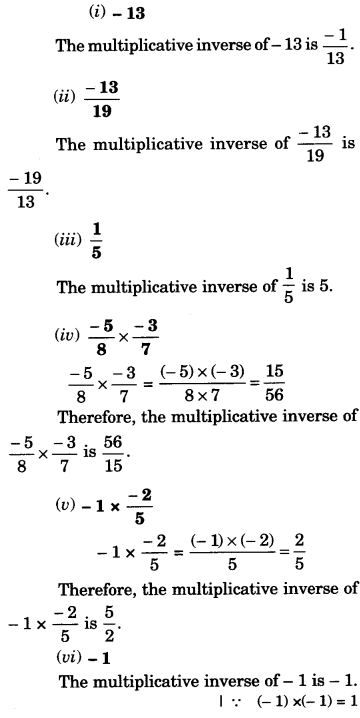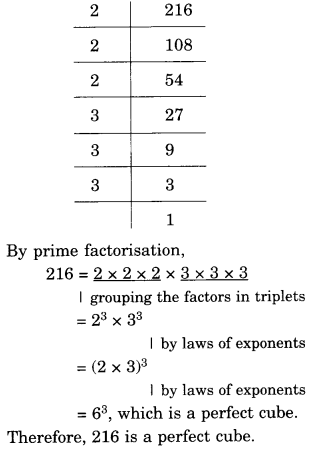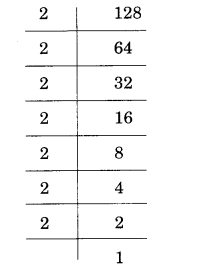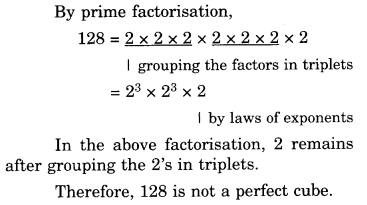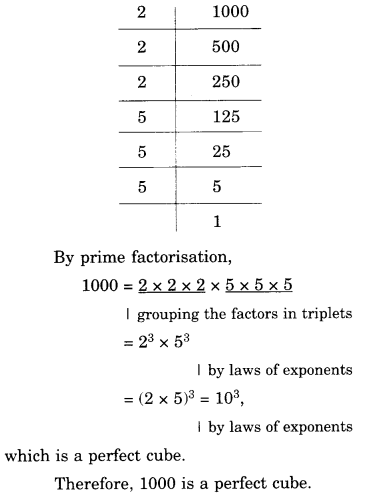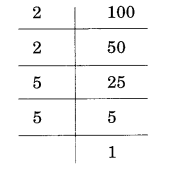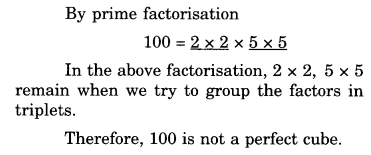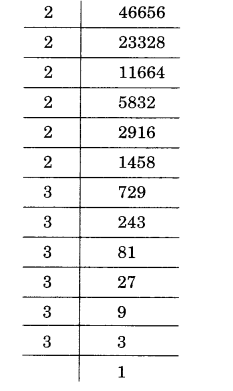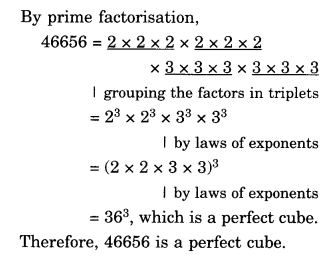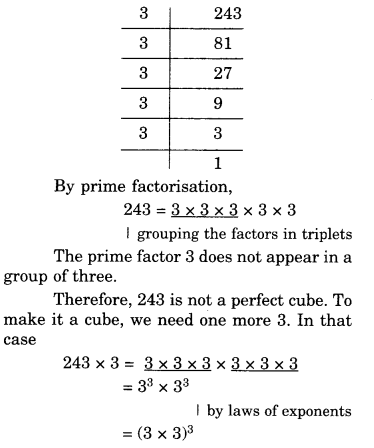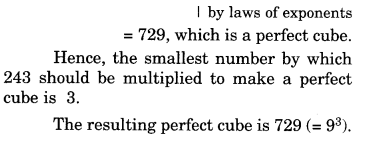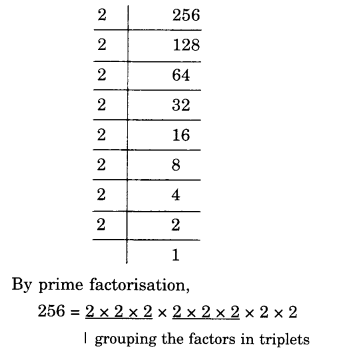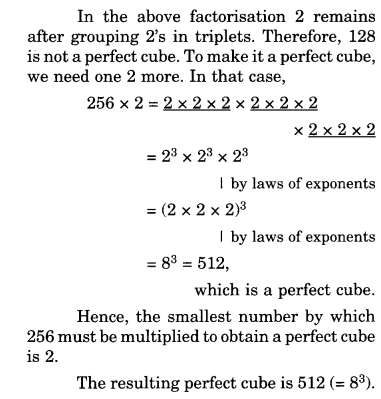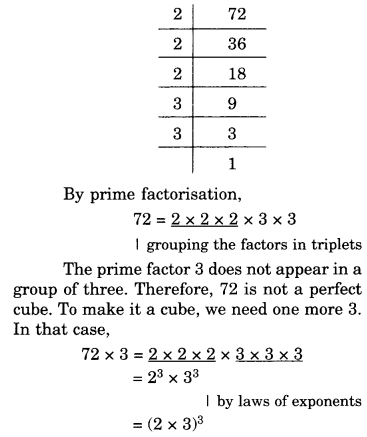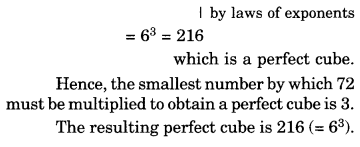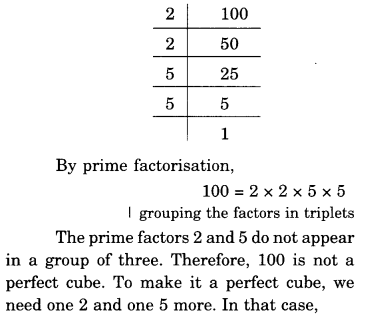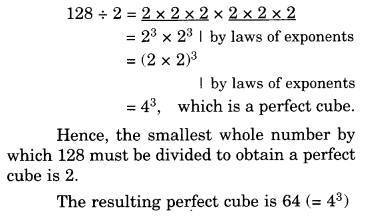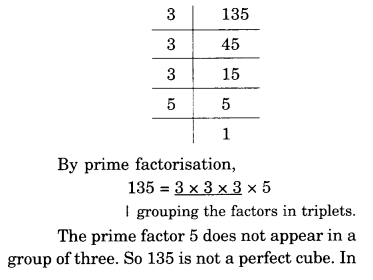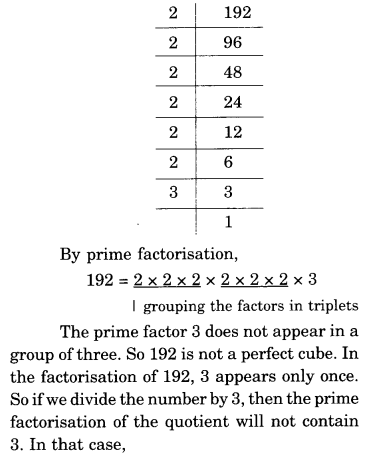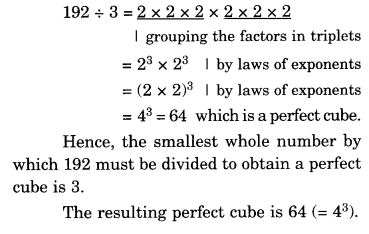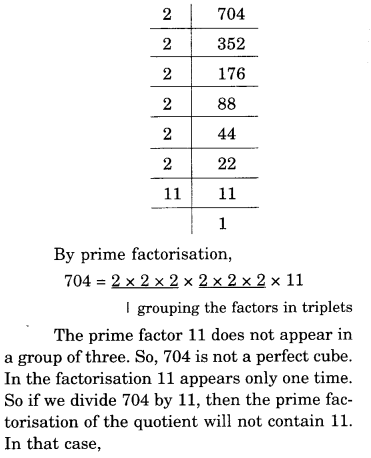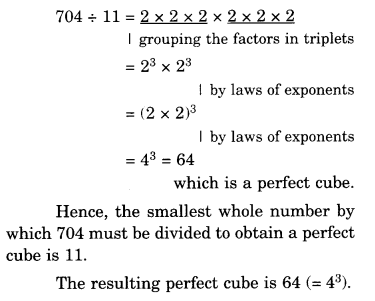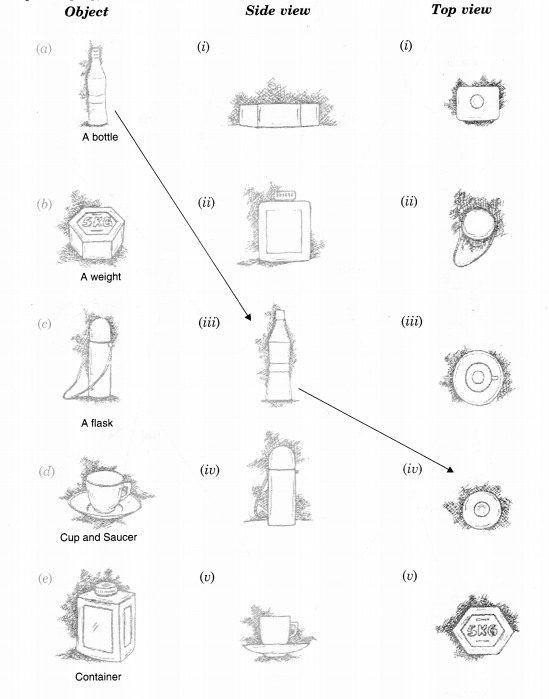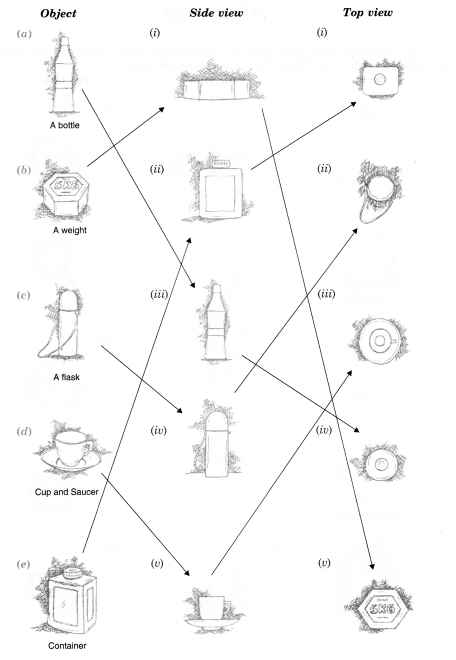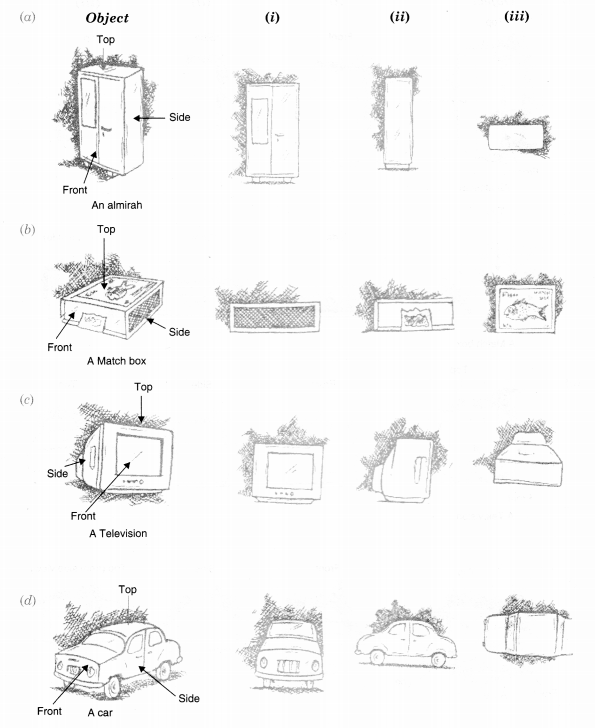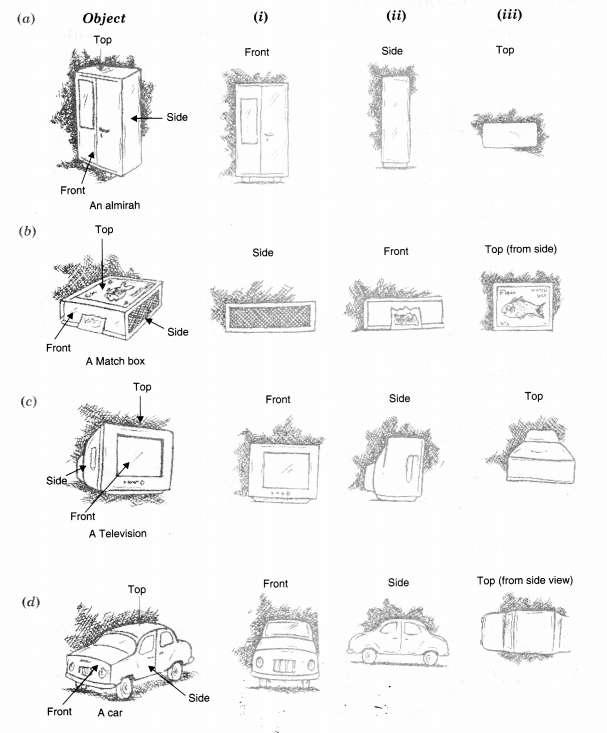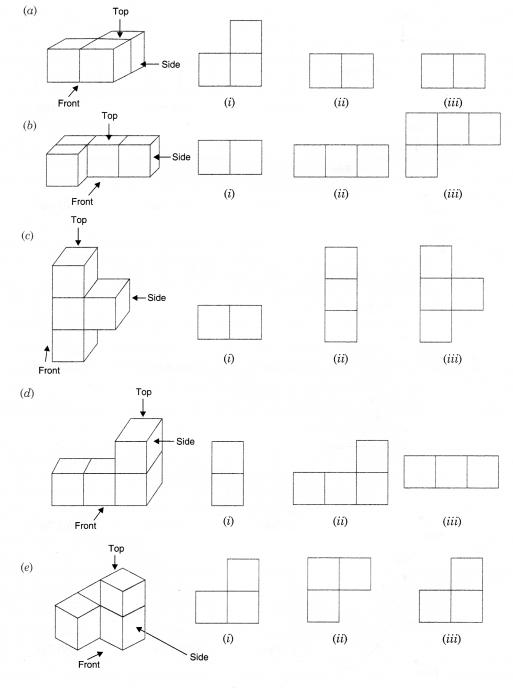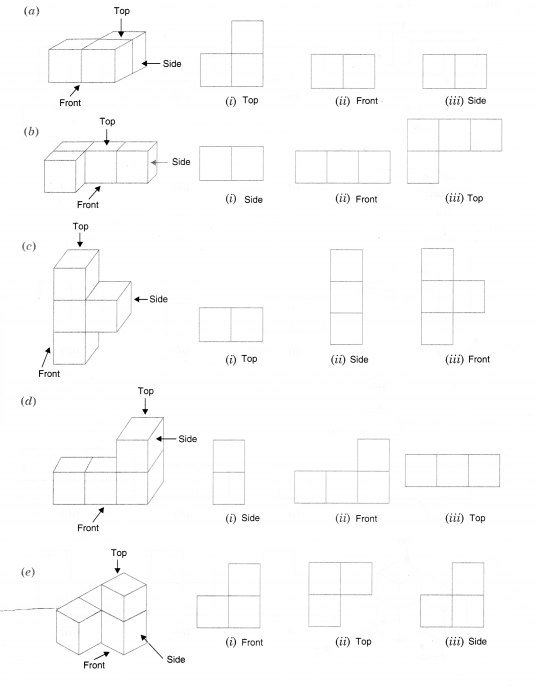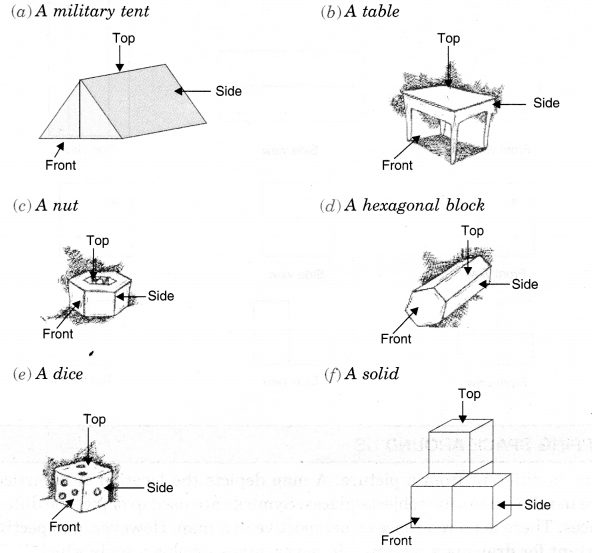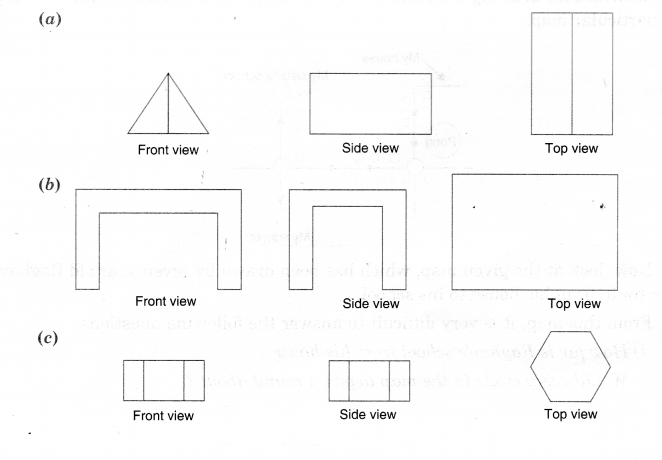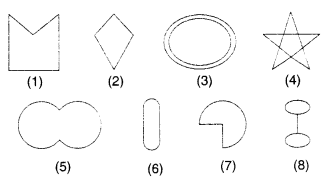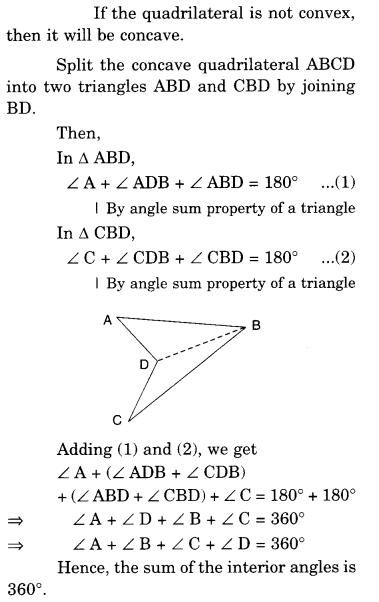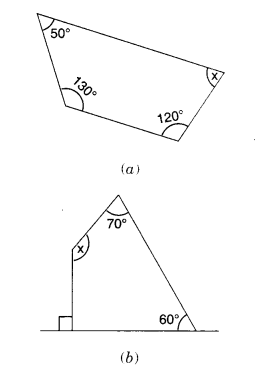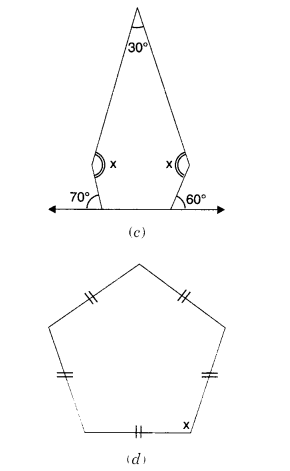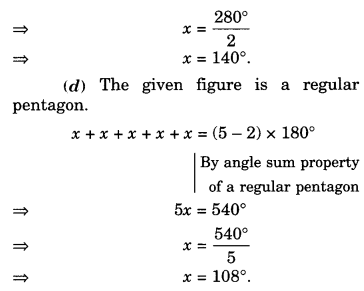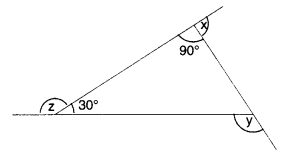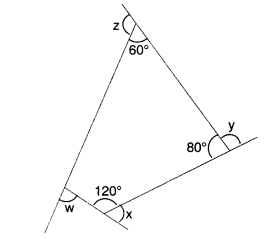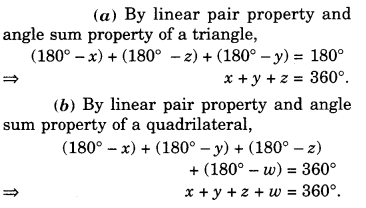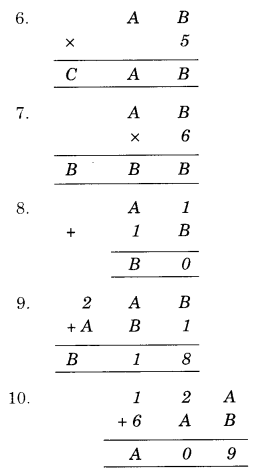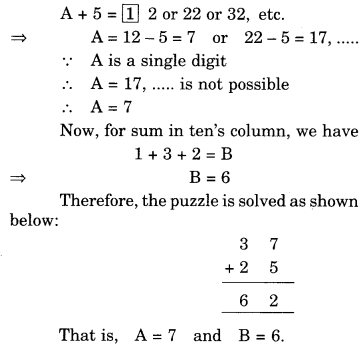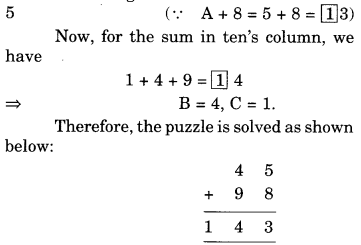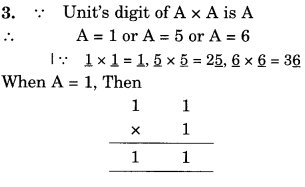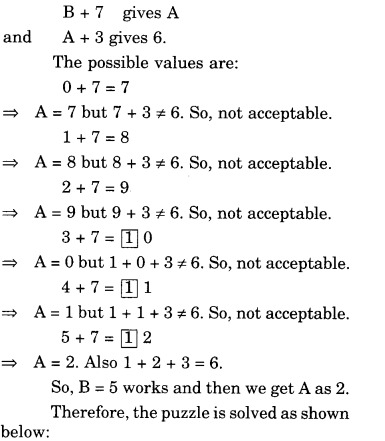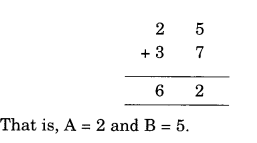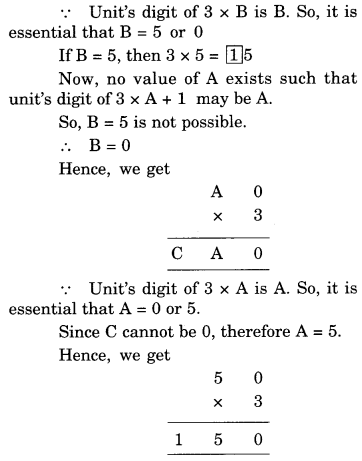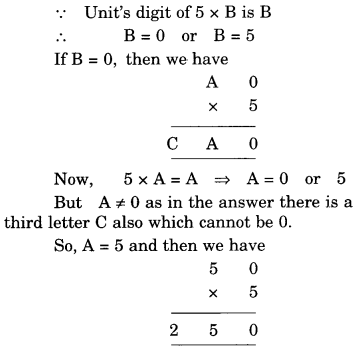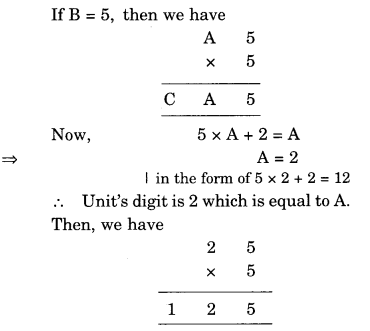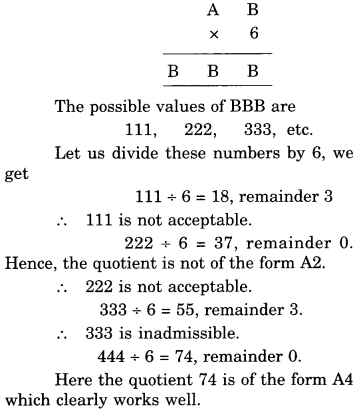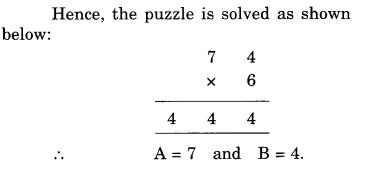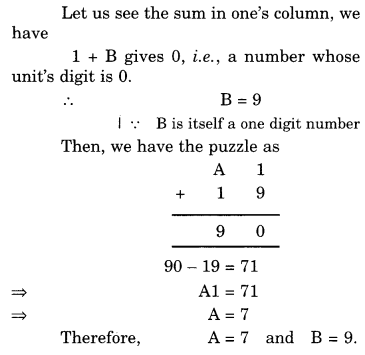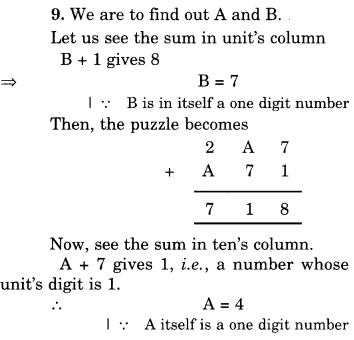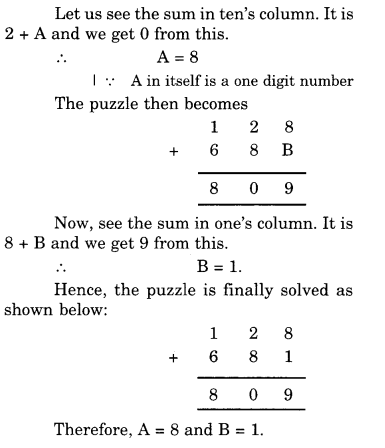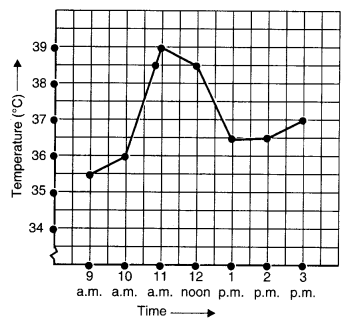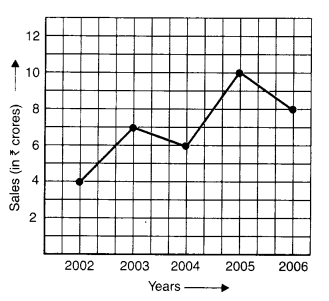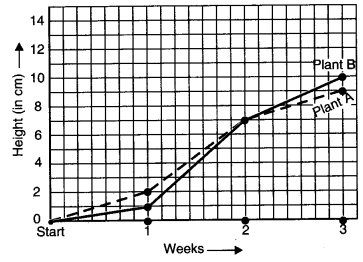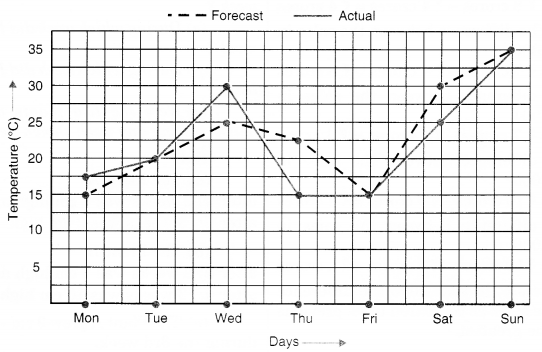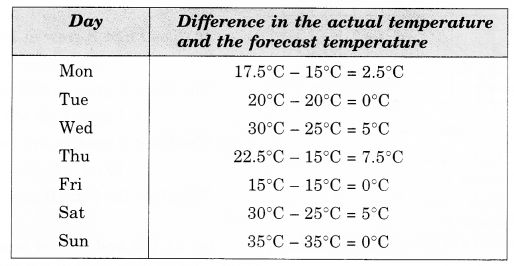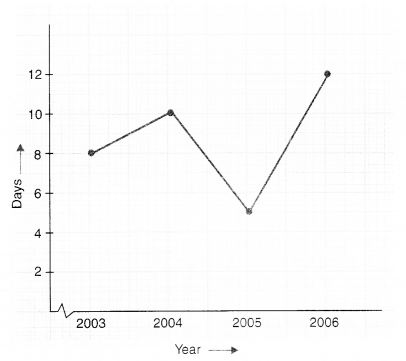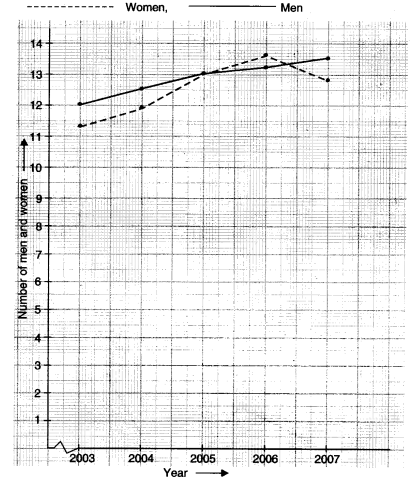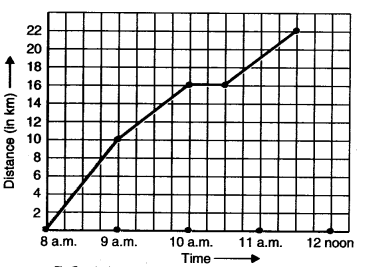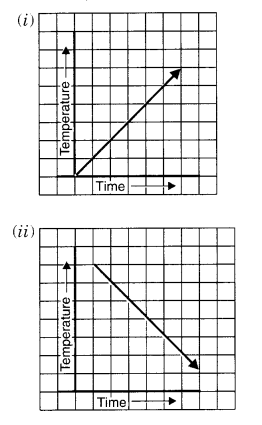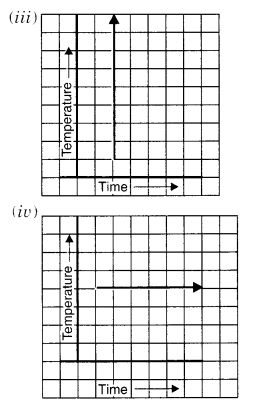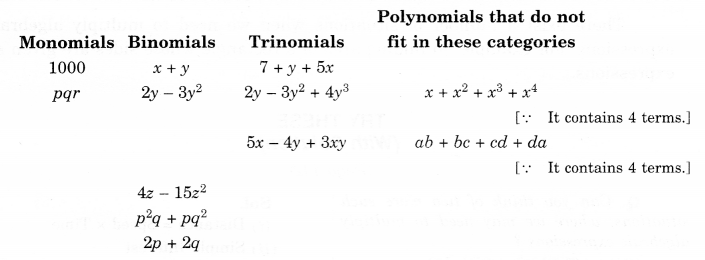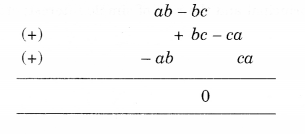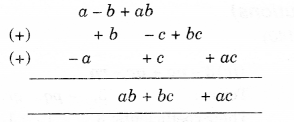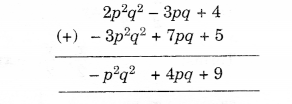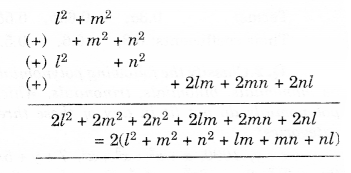NCERT Solutions for Class 8 Maths Chapter 1 Rational Numbers Ex 1.2 are part of NCERT Solutions for Class 8 Maths. Here we have given NCERT Solutions for Class 8 Maths Chapter 1 Rational Numbers Ex 1.2.
| Board | CBSE |
| Textbook | NCERT |
| Class | Class 8 |
| Subject | Maths |
| Chapter | Chapter 1 |
| Chapter Name | Rational Numbers |
| Exercise | Ex 1.2 |
| Number of Questions Solved | 7 |
| Category | NCERT Solutions |
NCERT Solutions for Class 8 Maths Chapter 1 Rational Numbers Ex 1.2
Question 1.
Represent these numbers on the number line.
(i) \(\frac { 7 }{ 4 } \)
(ii) \(\frac { -5 }{ 6 } \)
Solution.
(i) \(\frac { 7 }{ 4 } \)
We make 7 markings of distance \(\frac { 1 }{ 4 } \) each on the right of 0 and starting from 0. The seventh marking represents \(\frac { 7 }{ 4 } \)

(ii) \(\frac { -5 }{ 6 } \)
We make 5 markings of distance \(\frac { 1 }{ 6 } \) each on the right of 0 and starting from 0. The seventh marking represents \(\frac { -5 }{ 6 } \)

Question 2.
Represent \(\frac { -2 }{ 11 } ,\frac { -5 }{ 11 } ,\frac { -9 }{ 11 } \) on the number line.
Solution.
We make 9 markings of distance \(\frac { 1 }{ 11 } \) each on the left of 0 and starting from 0.
The second marking represents \(-\frac { 2 }{ 11 } \) the fifth marking represents \(-\frac { 5 }{ 11 } \) and the ninth marking represents \(-\frac { 9 }{ 11 } \)

Question 3.
Write five rational numbers which are smaller than 2.
Solution.
Five rational numbers which are smaller than 2 are 1, \(\frac { 1 }{ 2 } \),0, -1, \(-\frac { 1 }{ 2 } \)
Question 4.
Find ten rational numbers between \(-\frac { 2 }{ 5 } \) and \(\frac { 1 }{ 2 } \)
Solution.
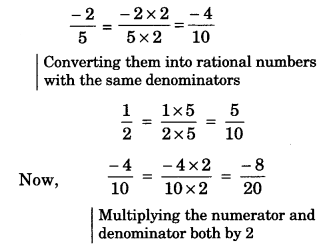
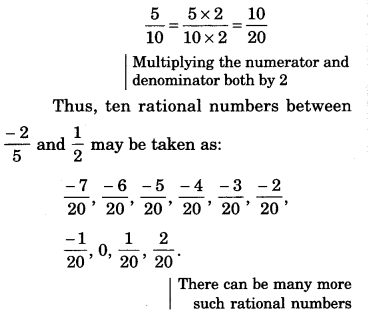
Question 5.
Find five rational numbers between:

Solution.
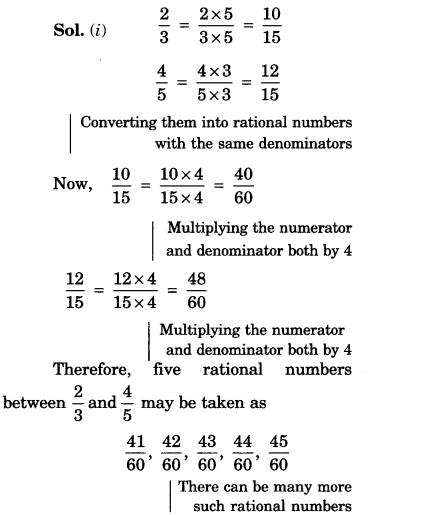
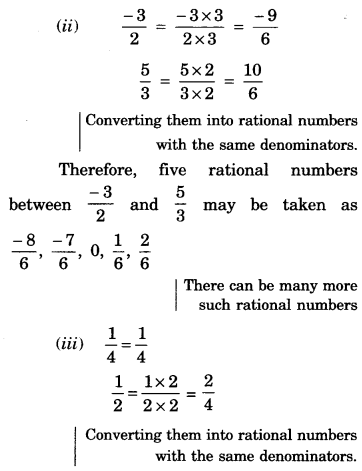
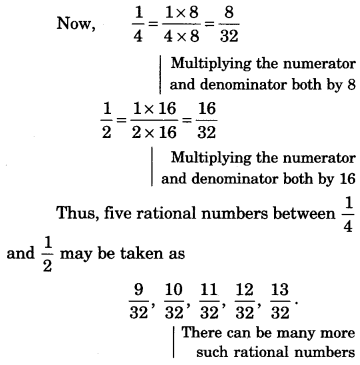
Question 6.
Write five rational numbers greater than -2.
Solution.
Five rational numbers greater than -2 are:
\(\frac { -3 }{ 2 } \), -1, \(\frac { -1 }{ 2 } \), 0, \(\frac { 1 }{ 2 } \)
There can be many more such rational numbers
Question 7.
Find ten rational numbers between \(\frac { 3 }{ 5 } \) and \(\frac { 3 }{ 4 } \)
Solution.
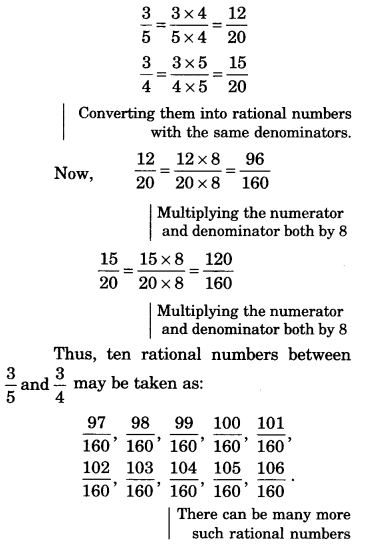
We hope the NCERT Solutions for Class 8 Maths Chapter 1 Rational Numbers Ex 1.2 help you. If you have any query regarding NCERT Solutions for Class 8 Maths Chapter 1 Rational Numbers Ex 1.2, drop a comment below and we will get back to you at the earliest.
